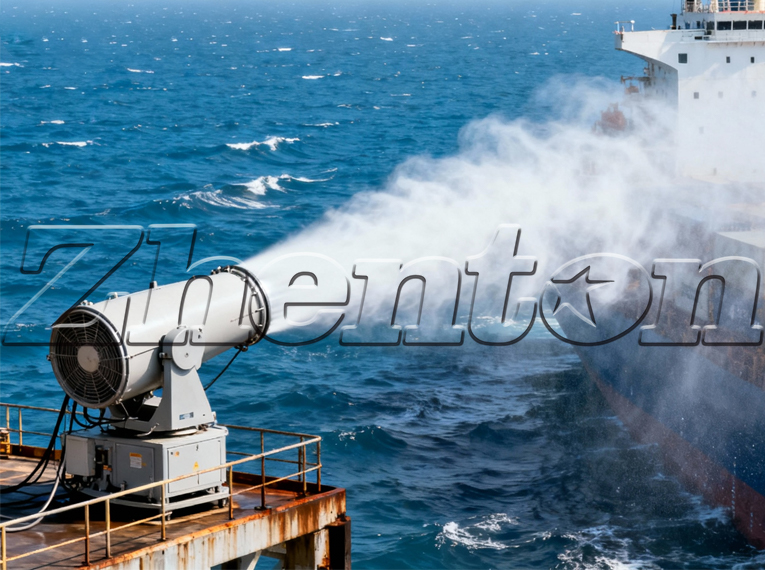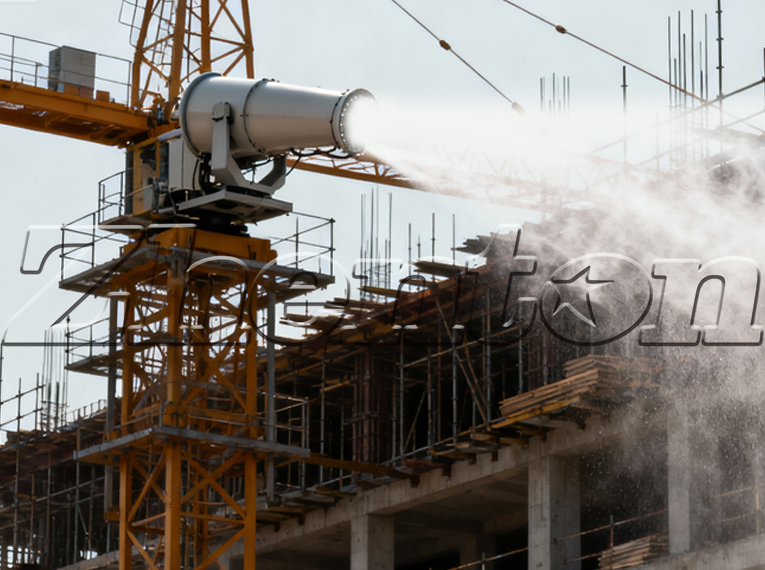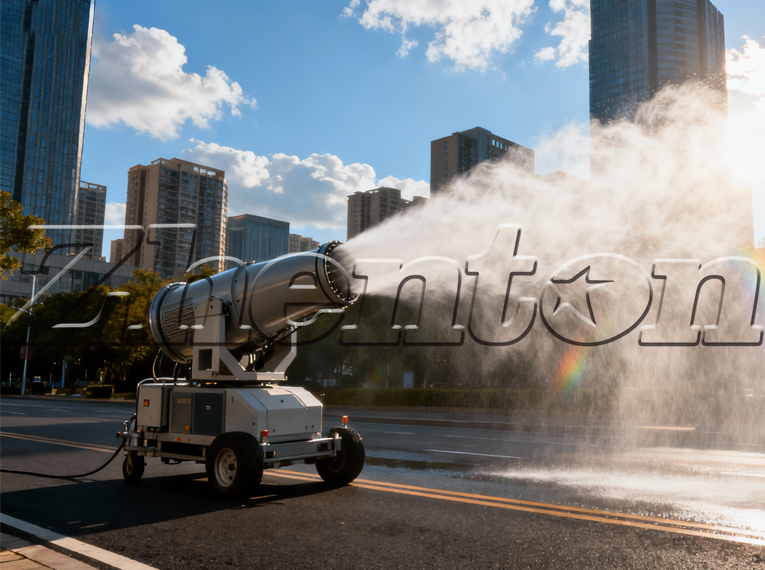In construction sites, waste yards, mining operations, and manufacturing facilities, dust pollution remains a persistent challenge—threatening worker health, violating environmental regulations, and damaging equipment. Fog cannons (also known as high-pressure mist cannons) have emerged as a cost-effective, efficient solution for dust management. This guide breaks down how these devices work, their practical applications, and why they’re a game-changer for industrial dust control.
How to Use a Fog Cannon for Dust Control?
Using a fog cannon for dust control is straightforward, yet strategic placement and setup maximize effectiveness.
Start by identifying high-dust zones: focus on dust-emitting sources like conveyor belts, demolition areas, or material stockpiles. Position the fog cannon to cover these sources directly—most models offer 360-degree rotation and adjustable elevation, ensuring wide coverage.
Pair the device with clean water or eco-friendly dust-suppressant additives for heavy-duty scenarios. Adjust the spray intensity and droplet size based on dust particle size: finer mist targets small, airborne particles, while coarser spray tackles larger dust clouds from heavy machinery.
For continuous operations, link the fog cannon to timers or dust sensors. This automation ensures the device activates only when dust levels exceed thresholds, saving water and energy without compromising control.
Dust Suppression vs. Dust Prevention: Full Comparison Guide
Understanding the difference between dust suppression and dust prevention helps businesses choose the right strategy—often, a combination delivers optimal results.
Dust suppression focuses on mitigating existing airborne dust. Fog cannons excel here by releasing atomized mist that traps dust particles, weighing them down to the ground. It’s a reactive, on-demand solution ideal for dynamic sites like construction zones or mining pits where dust is continuously generated.
Dust prevention is proactive: it stops dust from forming in the first place. Examples include sealing material storage, using wetting agents during material handling, or installing ventilation systems. These methods are effective for static sources but lack the flexibility to address sudden dust surges.
Fog cannons complement prevention efforts by handling unavoidable dust emissions. Together, they create a comprehensive dust management system that meets strict environmental standards and protects workplace health.

What Is a High-Pressure Mist Cannon & How Does It Work?
A high-pressure mist cannon is a specialized dust control device designed to atomize water into tiny droplets (5–50 microns) using high-pressure pumps.
The core mechanism is simple: water is pumped through a series of precision nozzles at pressures up to 1500 psi. This process converts water into a fine mist that behaves like a fog, spreading over large areas (some industrial models cover up to 100 meters).
When the mist encounters dust particles, the droplets adhere to them. This increases the particles’ weight, preventing them from becoming airborne or forcing them to settle safely. Unlike traditional sprinklers, high-pressure mist cannons use minimal water—reducing waste and avoiding muddy conditions that can hinder operations.
Modern models often include features like remote control, adjustable spray angles, and compatibility with dust sensors, making them adaptable to diverse industrial environments.
Practical Dust Suppression with a Fog Cannon: Step-by-Step Guide
Follow this step-by-step process to implement fog cannon dust control effectively:
Assess Your Site: Map dust hotspots (e.g., loading docks, crusher stations) and measure the area to determine the required fog cannon range and capacity.
Select the Right Model: Choose a high-pressure fog cannon based on coverage needs—smaller models (10–30m range) suit workshops, while large industrial units (50–100m range) work for open sites like landfills.
Position Strategically: Mount the fog cannon on a stable base (fixed or mobile) to cover dust sources directly. Avoid obstacles that block mist dispersion.
Configure Settings: Adjust droplet size (finer for small dust, coarser for large particles) and spray duration. Use timers or sensors for automated operation.
Test and Optimize: Run a trial to check coverage. Adjust position or settings if dust persists, and monitor water usage to ensure efficiency.
Maintain Regularly: Clean nozzles to prevent clogs, check pumps for pressure issues, and refill water/additives as needed to keep performance consistent.

Real-World Fog Cannon Dust Control Example Scenario
A mid-sized construction company was struggling with dust from a downtown demolition project. Neighboring businesses and residents complained, and the site faced potential fines for violating local air quality standards.
The company installed two 50m-range high-pressure fog cannons: one positioned near the demolition area, the other at the material loading zone. They integrated the cannons with dust sensors, so mist activated automatically when dust levels exceeded 0.5mg/m³.
Within a week, dust complaints dropped by 90%. The fog cannons used 70% less water than traditional sprinklers, avoiding muddy work areas. The site remained compliant with regulations, and the company maintained positive community relations—all while keeping operations on schedule.
This scenario highlights how fog cannons deliver targeted, efficient dust control without disrupting daily workflows.
Want to Enhance Dust Control with a High-Pressure Mist Cannon at Your Facility?
Dust control doesn’t have to be complicated or costly. High-pressure fog cannons offer a flexible, eco-friendly solution that adapts to your site’s unique needs—whether you’re managing a small workshop or a large industrial complex.
By combining strategic placement, automated operation, and minimal water usage, these devices help you comply with regulations, protect your team’s health, and reduce equipment wear. Say goodbye to unmanageable dust and hello to a cleaner, safer worksite.
Ready to find the perfect fog cannon for your facility? Reach out to explore customized solutions tailored to your dust control challenges.
Next
No Data!











